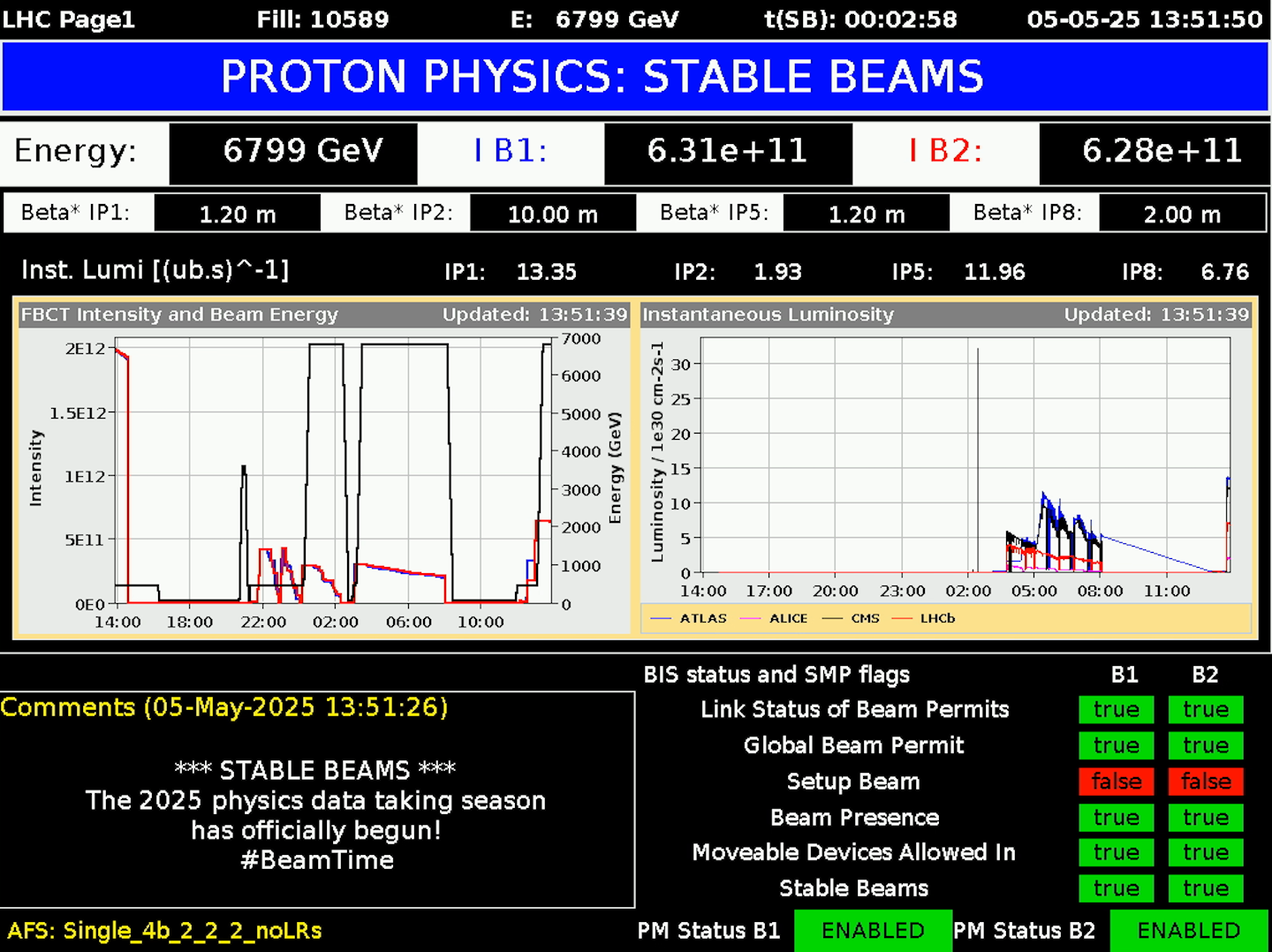Declaring first stable beams marks a major milestone for the LHC and is the culmination of a lot of important work to guarantee safe beam operation in 2025, but it is also the start of another phase in the schedule of the LHC, required to lead into the LHC data-taking season.
The next step is the interleaved beam commissioning and intensity ramp-up phase. In this phase, the number of bunches is increased in stages, while the number of protons per bunch is kept fixed at 160 billion (1.6 x 10¹¹). Initially, individual bunches are injected from the SPS, but the process will soon shift to injecting bunch trains – series of bunches spaced 25 nanoseconds apart – with, finally, 4 x 36 bunches per injection from the SPS. This intensity ramp-up will be interleaved with the remaining commissioning steps that are required to reach the 2460 bunches per beam scheduled for 2025.
Two important steps – required before going to longer and multiple bunch trains – are a reconfiguration of the cryogenics system and the scrubbing run, which aims to reduce the formation of electron clouds in the vacuum chamber.
The cryogenics reconfiguration provides additional cryogenic capacity to extract the heat induced mainly by the electron cloud production that will be prominent during the high-intensity operation, including the scrubbing run. Since this additional cryogenic capacity was not needed during early beam commissioning, it was kept switched off to save energy and reduce costs. This reconfiguration, originally planned for 5 May, has been postponed to 7 May.
Following the reconfiguration, the LHC will undergo a scrubbing run. This process cleans the vacuum chambers, reducing the secondary electron emission yield, by circulating an increasingly higher number of bunches and bunch trains in order to reduce the electron cloud production, preparing the machine for the upcoming 2460 bunches per beam. Although the scrubbing is scheduled to last two days, its actual duration depends on how quickly the machine conditions improve. Newly installed components – two injection kickers (MKI) and two injection beam dumps (TDIS) – will play a critical role in determining how much scrubbing is needed. Based on past experience, two days should be sufficient.
Once the scrubbing run is successfully completed, the LHC will begin the full intensity ramp-up. According to the original schedule, the goal was to reach stable beams with 1200 bunches per beam by 19 May. However, the four-day delay in the start of beam commissioning, which also pushed back the first stable beams by the same margin, will likely result in this milestone shifting by a few days as well. The final timeline remains to be confirmed based on machine and beam progress.
On the injector side, beam commissioning for the antimatter complex has been successfully completed. As of 5 May at 8.30 a.m., physics operations officially began for the experiments downstream of the ELENA machine. All fixed-target facilities are now operational and delivering physics.
Meanwhile, AWAKE completed the first of its two planned runs in 2025 on 4 May. As usual, AWAKE shares beam time with the LHC, which means that during LHC beam injection and filling, AWAKE does not receive beam. Because the LHC is still in its beam commissioning phase, requiring frequent injections, AWAKE faced regular interruptions.

Under normal circumstances, an AWAKE run would take place after the initial weeks of LHC commissioning to avoid such scheduling conflicts. This year, however, the AWAKE run was scheduled earlier in order to maximise beam time during what is a very short run year for the facility. AWAKE must stop operations by the end of May to allow the dismantling of the CNGS (CERN Neutrinos to Gran Sasso) target area, which is necessary for the planned extension of the AWAKE facility, ahead of its next, post-LS3 phase. AWAKE’s second and final run of 2025 is scheduled to take place from 12 May to 1 June.
On 5 May, the first of five planned HiRadMat runs for 2025 officially began. Each run typically spans one week and involves delivering high-intensity LHC-type beams, produced in the SPS and extracted toward the HiRadMat facility, located in a tunnel adjacent to the TI2 transfer line between the SPS and the LHC. These runs support a range of material and system tests under extreme beam conditions with varying degrees of energy density. Each experiment follows a predefined list of beam pulses, with operations running daily from 8.00 a.m. until around midnight.
That said, HiRadMat scheduling is also influenced by LHC beam operations. With a scrubbing run expected later this week, which, at least initially, involves frequent LHC beam fillings, the HiRadMat team is motivated to complete their pulse list early, ideally before the LHC scrubbing activity starts.

